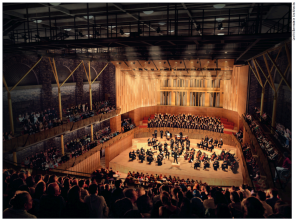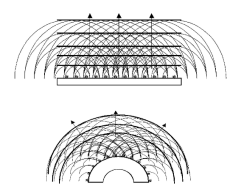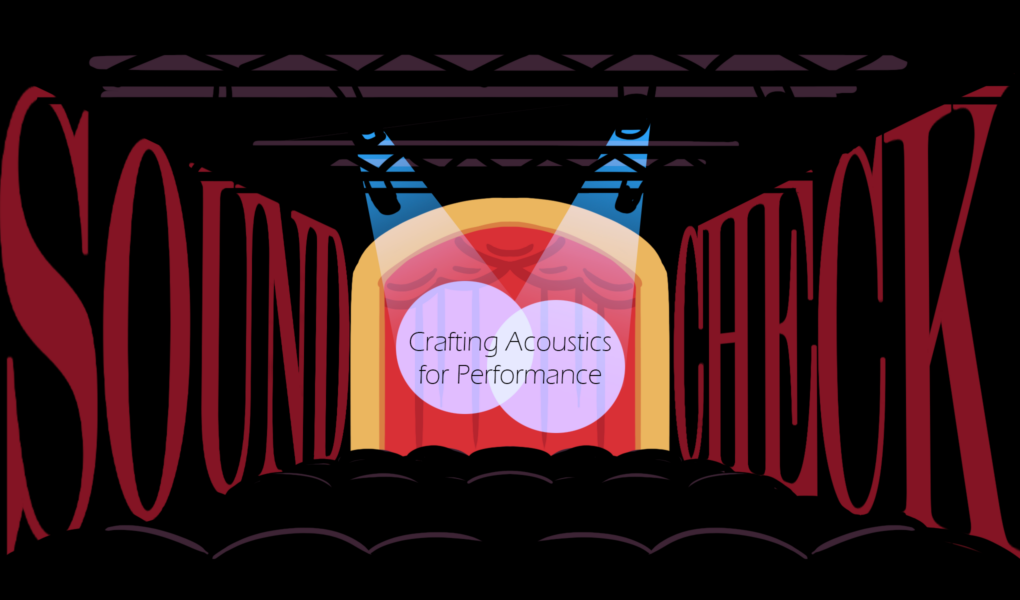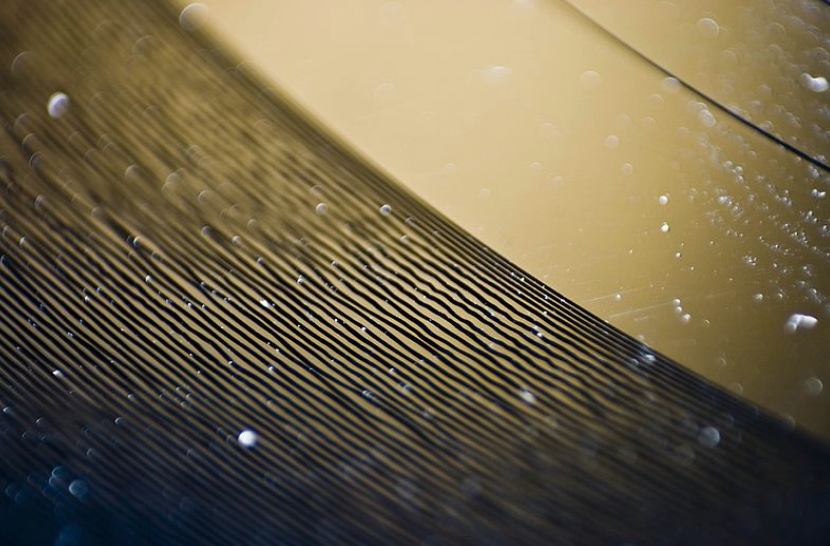Abstract
Designing performance venues requires a careful balance of physics, engineering, and creativity to achieve the best possible sound quality for audiences. From concert halls to theaters, the way these spaces are constructed can make or break the auditory experience. Every detail, from the materials used to the shape of the room, is meticulously planned to control how sound travels and interacts within the space. This article examines the science behind the design of performance venues, focusing on how acoustic principles are applied to create spaces that enhance sound. It also examines how emerging technologies are set to improve this process. New computer modeling tools will allow architects to more accurately predict how sound will behave in different structures, offering a more refined approach to designing these spaces. As performance expectations evolve, so will the demand for venues that can support richer and more immersive sound experiences. By exploring both the traditional scientific principles and the innovative tools shaping the future, this article offers a comprehensive look at the world of architectural acoustics.
Of Aural Importance
You’re in your high school theater, waiting for your little sibling to walk on-stage for their mid-semester band performance. The band walks on, sits down, and begins to play—it’s a muffled mess. Some of that may be due to their less-than-stellar instrumental ability. However, the design of the space is also a contributing factor. Now imagine you mistakenly take a seat in the back row of a lecture hall, and for the entire presentation you can’t make out a word the professor is saying. Poor acoustics is to blame for these situations, as the design of a venue or space has a significant impact on how an audience perceives and engages with the experience in front of them. Performance venues of all kinds are not solely designed with grandeur in mind. Instead, they must accommodate the acoustic and technical needs of the space in order for aural excellence to shine. Sound, in turn, is difficult to control, and manufacturing a space to allow for the correct refractions, reflections, and absorptions of the waves has long been a difficult task for engineers. The engineering of such spaces must take into account the physics of sound itself, the proper materials to manipulate it, and how to predict its movement so that the venue can be constructed to a standard of acoustic quality. Engineers and architects have continuously discovered methods to predict and control acoustics. However with the introduction of computer and AI modeling, the opportunities for improvement have expanded significantly.
The Basis of Sound
In order to better understand architectural acoustics, a foundation of knowledge in how sound functions should be established. Sound, in essence, is vibrations—an audio source vibrates with a certain frequency and the vibrations then compress the air in front of it, causing a chain reaction of compressed waves through the atmosphere until the vibrations reach our ears [1]. It’s as if you stretched a slinky horizontally on a table, and then pushed one end inwards—it would cause the compressed section to travel to the other end. How a sound travels, how it is interpreted by our ears, and factors such as its volume are determined by multiple characteristics, like the amplitude of the wave or the medium through which the sound travels. Some sound characteristics are visualized in the picture below—tthe refraction and compression can be demonstrated by the slinky coil.

Fig 1: Visualization of a sound wave and its properties [1].
The study of acoustics is primarily concerned with this idea of sound interaction—how it behaves with different materials, media, and spaces [1]. Just as sound can be produced from a source, it can also be reflected or absorbed by a surface. The materials and layout of a room cause sound to behave differently, which forms the foundation of
architectural acoustics. Many performance venues are not large and elegant simply for the sake of scale and beauty; they are built for sound. They are optimized for the above characteristics so that the audience does not receive an aural bombardment of mixed, messy noise. This careful orchestration of sound’s behavior within a space ensures that every note, word, or tone resonates with clarity and purpose, allowing the audience to fully experience the harmony between architecture and acoustics.
Shaping Sound: A Geometric Overview
The shape of a room is intrinsically tied to its use. After all, the scale of a venue is one of the biggest determinants of acoustics [2]. When examining early performance venues such as concert halls, a “shoe-box” design is commonly seen. They are still in use today and serve as a basic example of how the geometry of a space can impact its acoustical elements. While straightforward in appearance, the rectangular design creates many benefits for acoustics. To make this more digestible: a classic shoe-box hall is pictured below.

Fig 2: Classical Shoe-Box Concert Hall [2]
Simple, right? It looks like—well, a box. Although elementary in appearance, the geometrical layout can actually determine if a room dampens or enhances sounds. In the case of shoe-box halls, the parallel sidewalls significantly enhance acoustic quality by creating a controlled amount of reverberation, a crucial factor in venue design [3]. Reverberation refers to the way sound bounces indoors. Since not all materials absorb one hundred percent of sound waves, they continue traveling through a room until their amplitude decays to zero. It’s a Goldilocks factor—too much reverberation can sound sloppy, but too little may sound flat and lacking depth.
The key is to get that “just right” amount of reverberation—but how do we do that? Since reverberation is a cornerstone of acoustic design, architects will aim to optimize the “reverberation time,” or RT, of a venue. RT is a quantitative measurement that measures how long it takes for the average indoor noise to decay by 60 decibels after it is generated. To provide context, decaying 60 decibels is comparable to a conversation at normal volume fading to nothing. The recommended RT for music venues, for example, is between 1.4 – 1.7 seconds [3]. The RT can be easily calculated—an equation known as the Sabine formula was derived for this very purpose, and is shown below.

Fig 3: RT Sabine Formula [4]
V is the volume of the venue, Stot is the total surface area of the room, and the Sabine coefficient for that area [4]. This factor is why geometry and material science are integral to the construction of acoustic venues—RT is a precise yet delicate value that can be
influenced by a considerable variety of components, from the angle of the ceiling to the material of the chairs that fill the halls. In fact, the chairs inside a hall played a key role in the development of this equation. Physicist Wallace Clement Sabine used chair cushions to manually determine how absorptive materials impact sound decay in a room and found that the relationship between materials and reverberation time is linear. His groundbreaking work laid the foundation for modern acoustic design, showing how material choices directly influence sound behavior [2]. In the case of the shoe-box design, for example, the boxy architecture allows for an even spread of sound across a venue. For larger, more open spaces like opera houses or theaters, however, achieving good acoustics becomes significantly more challenging.
Material Matters: Absorption and Diffusion
Shape is not the sole determinant of acoustic fidelity. Material science and additional design elements in a performance space are also principal factors. Just as sound is sensitive to the shape of a venue, it is also influenced by the materials within it. To properly manipulate sound and control reverberation, both absorptive and diffusive techniques can be used. Absorption occurs when sound waves encounter a surface that soaks up their energy, preventing reflection. Soft, porous materials like foam or fabric are excellent absorbers and can take the form of seat cushions, carpet, or draperies. Each typeof material has an absorption coefficient, which quantifies how effectively it absorbs sound. Hard materials such as wood or concrete have a very low coefficient, while the aforementioned soft and porous materials have a high coefficient. These materials are placed strategically throughout a venue to dampen excessive reverberation, which can otherwise create an echo-filled or “muddy” sound environment. Diffusion, on the other hand, scatters sound waves in multiple directions, helping to distribute
sound evenly throughout a space. Diffusers are typically hard, uneven surfaces such as convex panels or corrugated walls. They break up sound waves, preventing them from reflecting directly back to the source, which could create an unwanted echo [5]. The diagram below illustrates this concept—the flat surface reflects sound evenly, pushing most of the waves toward the middle, where they become convoluted. When reflecting off of a curved surface, however, the waves have a much more even distribution.

Fig 4: Sound reflections against a flat (top) and curved (bottom) surface [5]. Diffusers are especially prevalent in venues with large audience seating areas or balconies, as the sound must be directed towards the upper and back seats to prevent dead spots. In modern acoustic design, the balance between absorption and diffusion is crucial to crafting an optimal auditory experience. Without the right mix, a venue can either sound too “dead,” with insufficient reverberation, or too “live,” where sound becomes chaotic and indistinct.
Modeling the Future
Despite the significant amount of engineering that goes into most performance venues, lecture halls, and other public spaces, you have likely encountered a space where the
pitch doesn’t sound quite right, or that some areas are quieter than others. This is because the process of creating an acoustic space isn’t always accurate. Accurately modeling an entire room with pinpoint precision to determine how to optimize the space in terms of both geometry and materials is an immensely difficult task. Traditionally, simple calculations like the Sabine equation and other mathematical models have been the foundation for predicting how a space will sound before construction. However, as venues and the events they host become more complex, the demand for better acoustics has grown. Additionally, designing indoor acoustics used to involve a trial-and-error approach, where different materials, shapes, and configurations were physically tested to optimize sound performance. This process was both time-consuming and costly. To create accurate, time-efficient acoustics, engineers must go one step further and use computer modeling to create and test venues for acoustic excellence.
Acoustic modeling provides measurements and attributes that assist with the design process by enabling designers to listen to the acoustics of the space prior to construction. The basis of this modeling is a process known as auralization, which is “an aural rendering of a simulated or measured space” [6]. Auralizations can be created digitally using modeling software that falls in the realm of CAD programs, such as the example shown below.

Fig 5: 3D Modeling Development Process [7]
These models are designed to match the real-life venue they are trying to predict, and are used to track attributes like reverberation time or clarity through impulse responses. More specifically, most current and developing digital modeling techniques fall under geometric acoustics, which includes beam tracing, ray tracing, and particle tracing, among other models [8]. These computer models streamline the simulation process by automatically generating input data for acoustic analysis, including architectural geometry, speaker placement, and material properties. This minimizes manual input errors and speeds up the evaluation process, which is particularly useful for complex buildings with intricate design elements. For example, when looking at ray tracing modeling, a source emits “rays” of sound within the model and reflects them around the simulated space, allowing designers to track and measure valid sound paths, angles of attack for audio sources, and diffusive patterns [9]. The rays themselves can be thought of as individual sound waves—just single, straight lines. The ray tracing simulations usually function with a source and a receiver within the 3D space. The source is the performer, and the receiver is you, the audience. With this framework, simulations can test how sound waves will interact with different parts of the room and what something would sound like throughout the audience [7]. This concept is illustrated in the diagram below, where a source is shown in the bottom left of each trial, emitting sound rays throughout the venue.

Fig 6: Ray tracing modeling trials [9].
In addition to these standard building information modeling techniques, machine learning and neural networks are beginning to be applied to acoustics as well. In 2022, researchers at the MIT-IBM Watson AI Lab had “developed a machine learning model that can capture how any sound in a room will propagate through the space, enabling the model to simulate what a listener would hear at different locations” [10]. Being able to model not just the acoustic environment of a venue and its elements, but also how the sound sounds in real time is an enormous step forward that will push acoustic design to the next level. This AI modeling has the ability to capture geometric data about the space and factor it into simulating sound, as well as modeling the movement and adjustment of sound sources within a space [10]. What would have been impossible to predict with physical models, and what would have been extremely time-consuming and inefficient with computer models, now becomes easily accessible with AI modeling. Using it alongside traditional computer modeling combines geometric analysis with clearer audience insights, making venue design more efficient, affordable, and innovative.
Encore
Whether you’re sitting in that high school theater, struggling to hear the music, or distracted in the back of a lecture hall, acoustics can make or break the experience. It’s not just the skill of the performer or the quality of the equipment—it’s the space itself that determines what reaches your ears. Every surface, shape, and material plays a role, from the geometry of a concert hall to the strategically placed wooden panels and curved walls that diffuse sound. These elements are the unsung architects of how we experience performances, lectures, or even the awkward coughing fit in the middle of a symphony.
Understanding the physics of sound, such as reverberation and the importance of managing it, offers a glimpse into the complexity behind what seems like such a simple thing—listening. Materials and shapes matter, and even the smallest design choices can affect how sound interacts with a space. Now, with the rise of advanced computer modeling and AI-driven simulations, we’re stepping into a new era where the art of acoustics meets cutting-edge technology. Acoustic engineers are no longer just shaping sound through trial and error; they’re predicting it, simulating it, and optimizing it before the first wall is even built.
The next time you sit in a performance venue or even a classroom, remember that the clarity, richness, or muddiness of what you hear isn’t just an accident. It’s the result of deliberate engineering aimed at perfecting the way sound behaves in that particular space. Thanks to ongoing advances in both machine learning and acoustic modeling, we’re moving closer to creating spaces where sound isn’t just heard, but felt in its fullest form, allowing every note, every word, every moment to resonate just right.
References
[1] “Sound Waves,” PASCO scientific. Accessed: Sep. 17, 2024. [Online]. Available: https://www.pasco.com/resources/articles/sound-waves
[2] A. Demming, “Sound designs,” Phys. World, vol. 33, no. 2, pp. 23–28, Feb. 2020, doi: 10.1088/2058-7058/33/2/33.
[3] K. Jeong, T. Hong, S. H. Kim, J. Kim, and S. Lee, “Acoustic Design of a Classical Concert Hall and Evaluation of its Acoustic Performance – A Case Study,” May 22, 2018, MDPI AG. doi: 10.20944/preprints201805.0309.v1.
[4] L. L. Beranek, “Concert Hall Acoustics—2008,” J Audio Eng Soc, vol. 56, no. 7, 2008. [5] T. J. Cox and P. D’Antonio, “Engineering art: the science of concert hall acoustics,” Interdiscip. Sci. Rev., vol. 28, no. 2, pp. 119–129, Jun. 2003, doi:
10.1179/030801803225010412.
[6] K. A. Hochgraf, “The Art of Concert Hall Acoustics: Current Trends and Questions in Research and Design,” Acoust. Today, vol. 15, no. 1, p. 28, 2019, doi:
10.1121/at.2019.15.1.31.
[7] S. Pelzer, L. Aspöck, D. Schröder, and M. Vorländer, “Integrating Real-Time Room Acoustics Simulation into a CAD Modeling Software to Enhance the Architectural Design Process,” Buildings, vol. 4, no. 2, pp. 113–138, Apr. 2014, doi: 10.3390/buildings4020113.
[8] Y. Tan, Y. Fang, T. Zhou, Q. Wang, and J. C. P. Cheng, “Improve Indoor Acoustics Performance by Using Building Information Modeling,” 2017.
[9] L. Savioja and U. P. Svensson, “Overview of geometrical room acoustic modeling techniques,” J. Acoust. Soc. Am., vol. 138, no. 2, pp. 708–730, Aug. 2015, doi: 10.1121/1.4926438.
[10] “Using sound to model the world,” MIT News | Massachusetts Institute of Technology. Accessed: Sep. 17, 2024. [Online]. Available:
https://news.mit.edu/2022/sound-model-ai-1101



